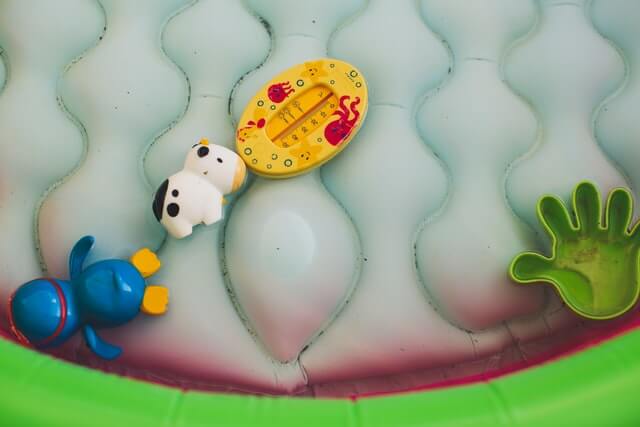Among the main challenges that children with autism spectrum disorder (ASD) and their families face are meltdowns and outbursts.
These problems could cause physical, verbal, and emotional damage, but that doesn’t mean that you can’t control them.
In fact, this article was written to help you understand what outbursts, temper tantrums and meltdowns are, their common signs, how you should handle them when they occur, and what you need to do to prevent them from happening, in the first place.
What is a meltdown/outburst?
When autistic children find themselves in a stressful or overwhelming situation, they may become unable to well regulate emotions in themselves and their sentiments. A meltdown or outburst is an intense response to these feelings.
To clarify, meltdowns and outbursts aren’t necessarily bad habits. Instead, they are merely ways for children with autism spectrum, to express themselves when they don’t know how to do so in other ways.
What do outbursts look like?
After losing control of their emotions, your autistic son or daughter may have a verbal or physical outburst (or both).
Here are the characteristics of each:
- Physical Outbursts: Your child might engage in biting, hitting, kicking, and other physically-aggressive actions.
- Verbal Outbursts: Similarly, your kid could cry, scream, and/or shout.
Since meltdowns and aggressive outbursts can cause bodily, material, and emotional harms, you should keep an eye on their main signals and indicators. This allows you to prevent a meltdown before it happens.
Signs of an Outburst
Most of the time, an autistic child’s behavior will give you cues that they’re distressed and about to experience a meltdown.
The following outburst signs are common:
- Anxiety
- Asking repetitive questions as a way to get reassurances
- Pacing
- Rocking
- Staying very still
Once you identify these symptoms, you need to intervene and prevent the meltdown from happening.
What to Do When Your Autistic Child Is Having an Outburst
There are two aspects that you should focus on when addressing your son or daughter’s aggressive behavior or potential outburst.
Firstly, after you spot the main signs, you must manage them by doing the following:
- Ask if They’re Okay: A simple question like “are you okay?” could provide you with plenty of answers. However, keep in mind that some autistic kids might need time to give a response.
- Give Them Space: This entails physical and mental space. For example, you may want to take your kid to a quiet and safe area that they’re comfortable with. In the same vein, turning down the music and/or lights can psychologically calm the child down.
- Give Them Time: Whenever your son or daughter suffers from a sensory or information-related overload, you should give them enough time to recover and recuperate.
Secondly (and equally as important) is knowing what the triggers of an outburst or meltdown are so that you can eliminate them and prevent one from happening. Here are a few prevalent triggers:
A Change in The Child’s Routine
It is very easy for autistic children to feel unsettled when they have to follow a schedule that they’re unfamiliar with.
Therefore, you may want to gradually make changes to their routine while keeping a close eye on their symptoms as you do so.
Communication Difficulties
Simply put, many kids with ASD have a hard time when they communicate with others and are likely to be misunderstood.
By working with your son or daughter on their communication skills and identifying the signs that they’re struggling to express themselves, you can cater to their needs and stop an impending meltdown in its tracks.
Sensory Challenges
The brains of autistic kids are wired differently than their neurotypical counterparts. As a result, they may run into issues that impact their senses and the way that their body responds to sounds, lights, and other aspects in their environment.
This means that intense senses or sensory overload, such as loud noises and bright lights, might trigger an outburst or meltdown.
As a parent, you want to know what your child’s sensory triggers are in order to minimize their effect on their conduct.
At the end of the day, you should always remember that autism outbursts aren’t bad or aggressive behaviors in of themselves. Instead, they are verbal and physical actions that your child may engage in when they don’t know how to express themselves.
By identifying and managing an outburst’s signs, alongside eliminating its triggers, you can effectively prevent future meltdowns from occurring and help your autistic son or daughter communicate in a calmer and better manner.
Calming techniques for autism outbursts
Calming techniques for autism outbursts can be highly individualized and dependent on the person’s unique needs and preferences. However, several strategies are commonly recommended by experts and found to be effective in many cases:
- Use Sensory Objects: Objects that engage the senses, such as stress balls, fidget spinners, or weighted blankets can help individuals with autism self-regulate and calm down.
- Provide an Escape: Offering a safe and quiet space where the individual can retreat during a meltdown can be helpful. This escape plan can help them regain control over their emotions.
- Simple Exercises or Routines: Developing simple exercises or routines that are calming can be beneficial. These could include deep breathing exercises, muscle relaxation techniques, or even listening to calming music.
- Tactile Comforting Techniques: If physical contact is acceptable, comforting techniques like hugs, a favorite plush, or a cozy sweater can create a safe and comfortable environment.
- Heavy Work Activities: These types of activities, which involve pushing, pulling, or carrying heavy items, can provide beneficial sensory input and promote calmness.
- Preferred Sensory Activities: Engaging in activities that the individual particularly enjoys, such as swinging or jumping on a trampoline, can also be calming.
- Relaxation Techniques: Methods such as deep breathing, meditation, and yoga have been found to be effective in managing emotions and behaviors in individuals with autism.
How ABA therapy can help autism outbursts
Applied Behavior Analysis (ABA) therapy is an evidence-based intervention widely recognized for its effectiveness in helping individuals with autism, including managing outbursts. Here are some ways ABA therapy can help with autism outbursts:
- Reinforcing Positive Behaviors: The primary objective of ABA therapy is to reinforce desirable behaviors and decrease harmful or disruptive ones. By doing so, it can help children improve their communication, social skills, and self-control, which can result in fewer outbursts.
- Reducing Aggressive Behaviors: Research shows that ABA therapy can effectively reduce aggressive behaviors in many cases. This is achieved by teaching alternative, healthier responses to situations that typically trigger aggression.
- Improving Communication and Social Skills: Many outbursts in children with autism can stem from frustration over difficulties in expressing their needs or understanding others. ABA therapy can help improve these skills, thereby reducing the frequency and intensity of outbursts.
- Personalized Approach: ABA therapy is tailored to each individual’s needs and abilities. This personalized approach ensures that the strategies used are the most effective for each child, taking into account their unique challenges and strengths.
- Evidence-Based Treatment: ABA employs evidence-based treatments, meaning the techniques and strategies used have been scientifically proven to be effective. This gives families confidence in the therapy’s ability to bring about positive change.
In conclusion, ABA therapy, through its focus on reinforcing positive behaviors and reducing negative ones, personalizing treatment, and improving communication and social skills, can significantly help manage autism outbursts.













